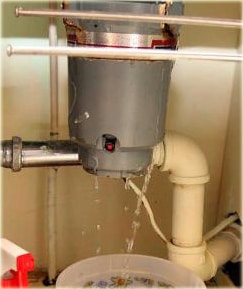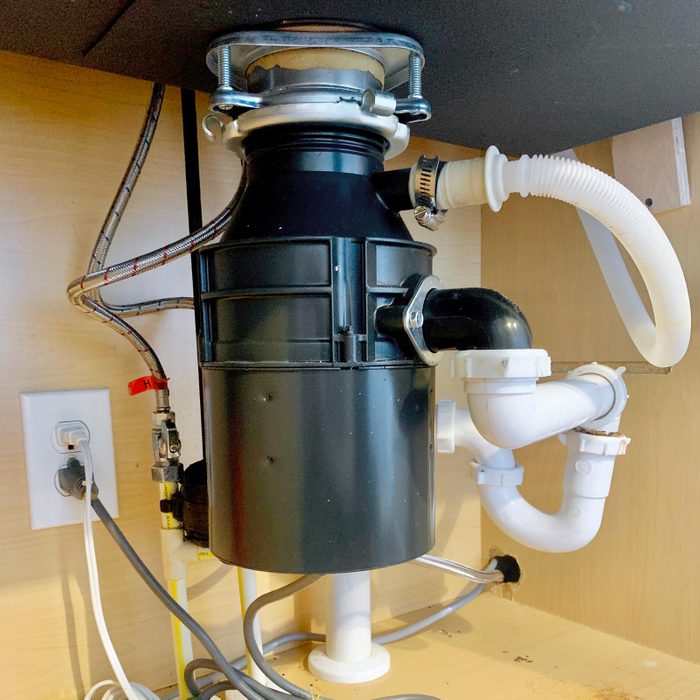Highly-Rated Methods for Resolving a Leak in Your Garbage Disposal
Highly-Rated Methods for Resolving a Leak in Your Garbage Disposal
Blog Article
We've uncovered this great article relating to Tips on Fixing a Leaking Garbage Disposal below on the web and decided it made perfect sense to write about it with you over here.

Waste disposal unit are vital kitchen home appliances that help in disposing of food waste efficiently. Nonetheless, a leaking waste disposal unit can be an aggravating and messy issue to deal with. Fortunately, several leaks can be fixed quickly with a couple of straightforward steps. In this article, we will certainly review just how to repair a leaking waste disposal unit efficiently.
Introduction
Waste disposal unit are set up under kitchen area sinks and are made to shred food waste right into smaller items, enabling it to pass through the pipes system easily. While these gadgets are usually reputable, leakages can happen gradually as a result of wear and tear, loose connections, or damage to the unit.
Step-by-Step Guide to Taking Care Of a Dripping Waste Disposal Unit
Turn Off the Power
Prior to trying any kind of fixings, make certain that the power to the garbage disposal unit is turned off to prevent the threat of electrical shock.
Situate the Leak
Recognize the exact location of the leakage and identify the cause
Tighten up Connections
Use a wrench to tighten up any loose connections in between the disposal system and the pipes system.
Change Seals or Gaskets
If the leakage is due to worn seals or gaskets, get rid of the old parts and replace them with new ones.
Patching Splits or Holes
For cracks or openings in the disposal system, usage epoxy or a suitable patching material to secure the damaged location.
Identifying the Resource of the Leakage
Prior to attempting to repair a leaking waste disposal unit, it is necessary to recognize the resource of the leak. This can generally be done with visual inspection or by carrying out straightforward tests.
Visual Inspection
Inspect the waste disposal unit system meticulously for any signs of water leakage. Pay very close attention to areas around seals, gaskets, and link factors.
Testing for Leakages
One means to evaluate for leakages is by running water via the disposal device and looking for any noticeable indications of leakage.
Typical Sources Of Leakages in Waste Disposals
Worn Seals and Gaskets
Seals and gaskets play an important role in protecting against water from leaking out of the waste disposal unit. Gradually, these components can degrade, resulting in leakages around the disposal system.
Loose Links
The connections between the waste disposal unit and the pipes system can end up being loosened gradually, creating water to leakage out throughout procedure.
Splits or Openings in the Disposal Device
Physical damages to the garbage disposal, such as fractures or openings in the housing, can likewise cause leakages.
Tools and Materials Needed for Fixing a Leaking Garbage Disposal
Before beginning the repair service procedure, collect the necessary tools and materials, including a screwdriver, flexible wrench, plumbing's putty, substitute seals or gaskets, and epoxy or patching product for repairing cracks or holes.
Evaluating the Garbage Disposal After Repair Work
Once the repair is total, check the garbage disposal by running water via it to make sure that the leakage has been solved.
Preventive Maintenance Tips to Prevent Future Leaks
To stop future leakages, it is vital to do routine upkeep on your garbage disposal. This consists of keeping it tidy, preventing putting non-food products or hard things down the disposal, and regularly looking for leakages or other problems.
Final thought
To conclude, fixing a leaking waste disposal unit is a reasonably straightforward process that can be finished with standard tools and materials. By following the actions laid out in this article and practicing preventive maintenance, you can keep your garbage disposal in good working condition and avoid pricey repairs in the future.
HERE’S HOW TO FIX YOUR GARBAGE DISPOSAL
WHAT TO DO IF SOMETHING IS STUCK IN YOUR GARBAGE DISPOSAL
If the impeller won’t turn, there’s probably something stuck in the disposal. It could be a steak bone or peach pit, although plumbers report pulling all sorts of inappropriate objects out of disposals, such as bottle caps or aluminum foil. Make sure power to the disposal is off, and look inside to see if you can see the source of the jam.
Never stick your fingers in a disposal. Pull out anything you see with tongs or pliers.
If the disposal still won’t work, it may be time to call a plumber or consider buying a new disposal. GEM Plumbing & Heating is here for all of your garbage disposal needs.
WHAT TO DO IF YOUR GARBAGE DISPOSAL DRAIN IS CLOGGED
Take everything out from underneath your sink and put a bucket or other container under your disposal to catch any water that drains out. Disconnect your disposal from the power supply. If it’s plugged into a wall outlet, unplug it. If it’s hardwired into an electrical box, go to the electrical panel and turn off the breaker for the disposal. Pour ¼ cup of baking soda into the drain, followed by ½ cup of white vinegar. Give the solution a few minutes to fizz and do its work. Look into the disposal with a flashlight to see if you can see an object that might be causing the clog. If you see it, remove it using tongs or pliers. MORE TIPS ON DEALING WITH A CLOGGED GARBAGE DISPOSAL
Never use drain cleaner in a garbage disposal. It can damage the plastic parts inside the disposal. You can also be splashed with the caustic liquid while working to clear the clog. Beware! Never stick your fingers into a garbage disposal. Trust us — not a good idea. In many instances, your dishwasher drains through your garbage disposal. This allows the disposal to grind any large food particles that may be drained out of your dishwasher. There are some jurisdictions, however, where the plumbing code prohibits such a connection. WHAT TO DO WHEN YOUR DISHWASHER DRAINS THROUGH THE DISPOSAL
Run some water in the sink so your plunger has at least a ½-inch of water to create a seal and plunge vigorously up and down several times. You may need to repeat this several times. Run hot water down the drain to clear any residue that remains.

As a person who reads about Tips on Fixing a Leaking Garbage Disposal, I thought sharing that piece of content was a good idea. Are you aware of another person who is serious about the topic? Do not hesitate to promote it. We treasure reading our article about Tips on Fixing a Leaking Garbage Disposal.
Show Details Report this page